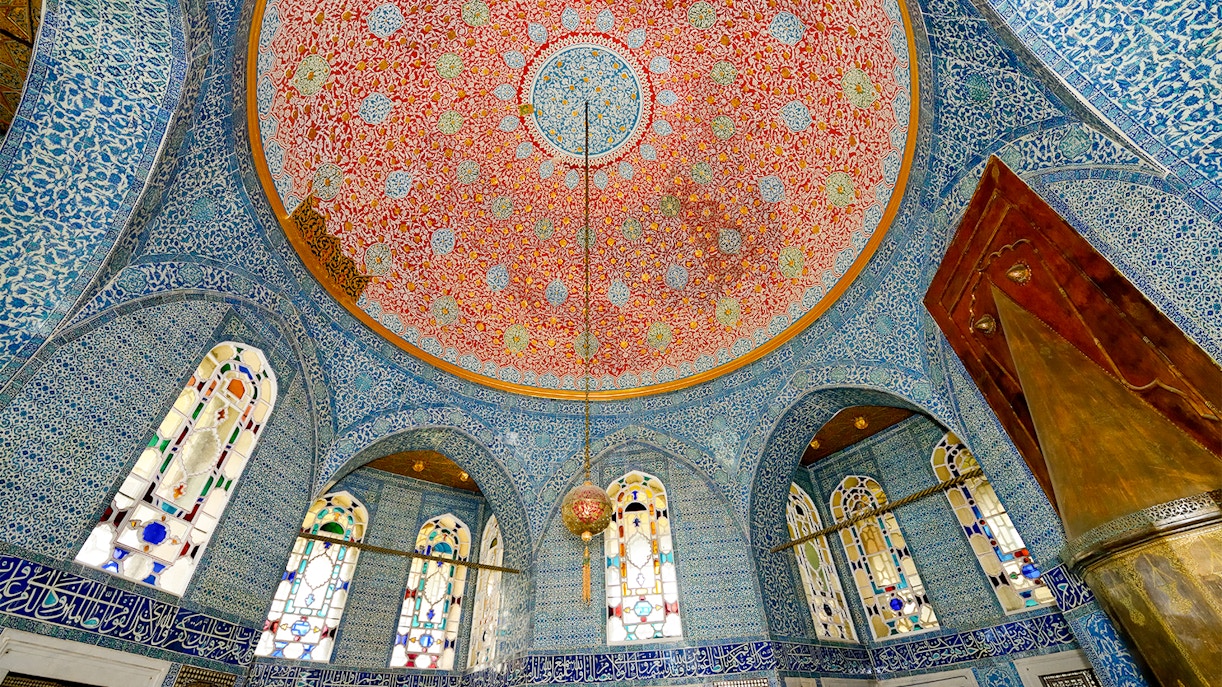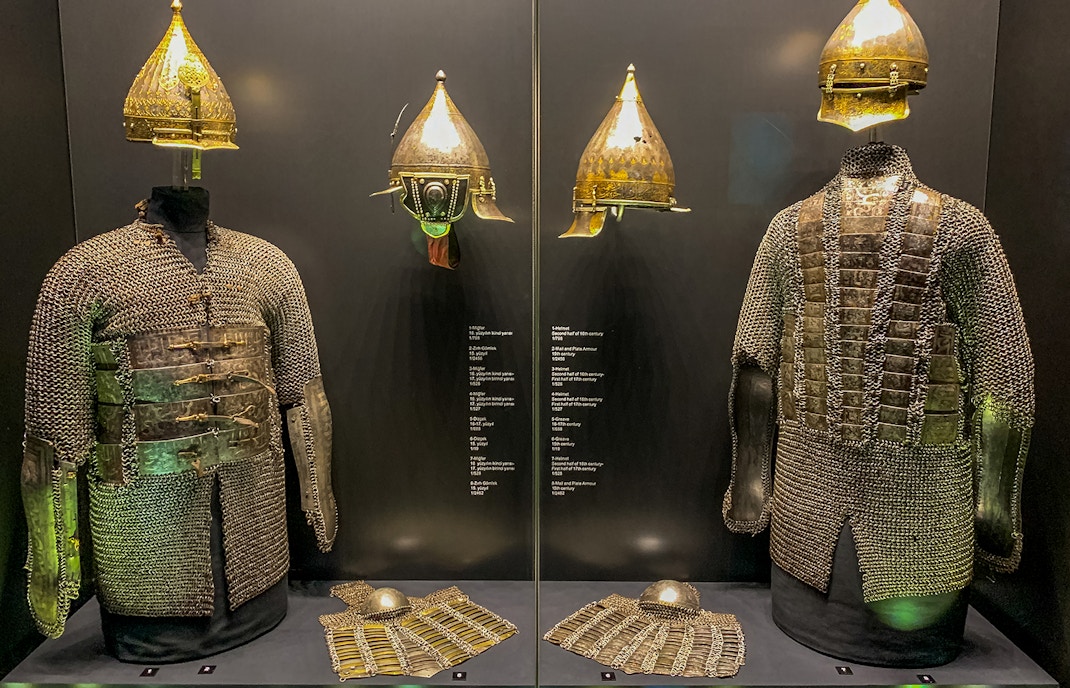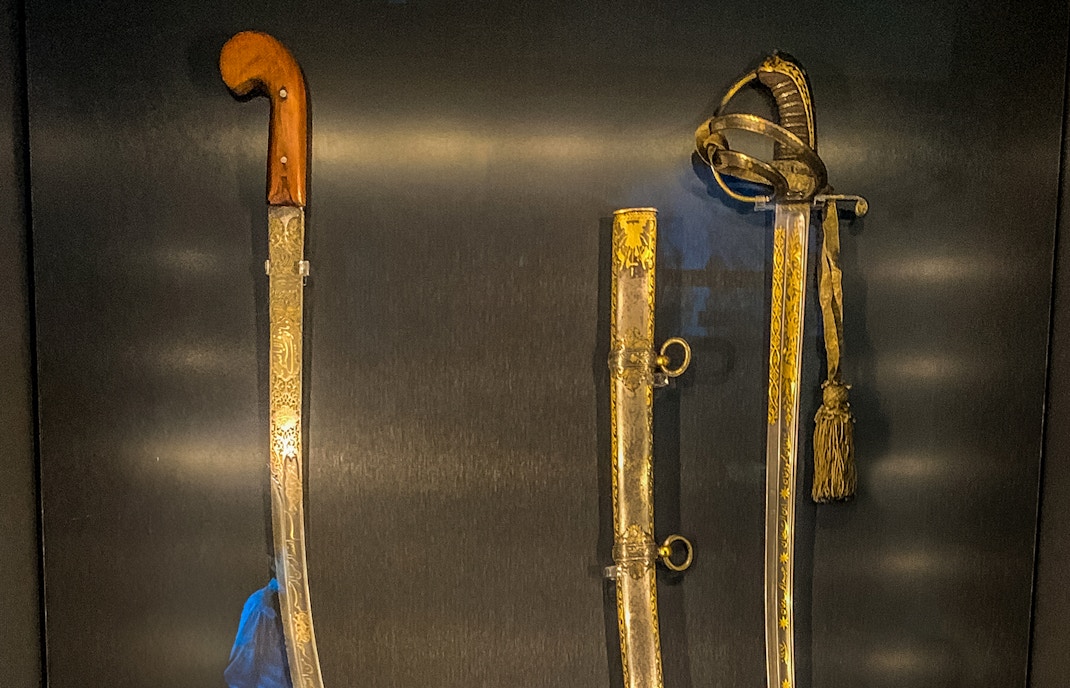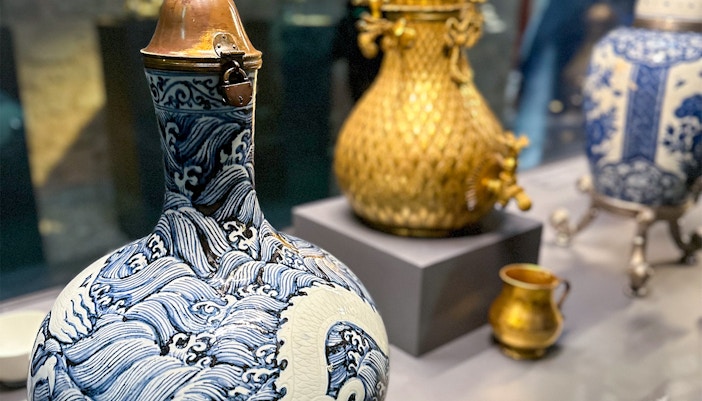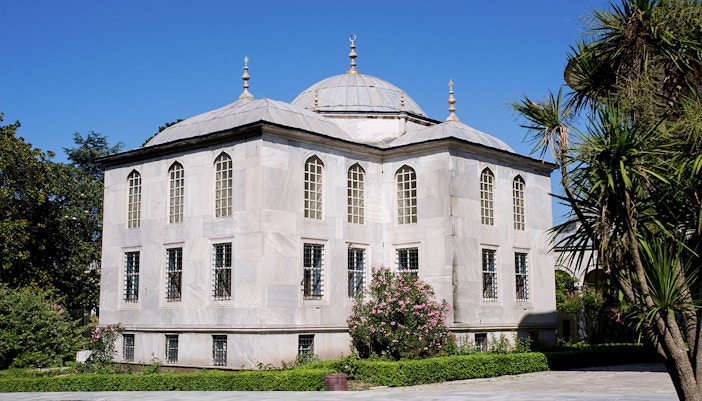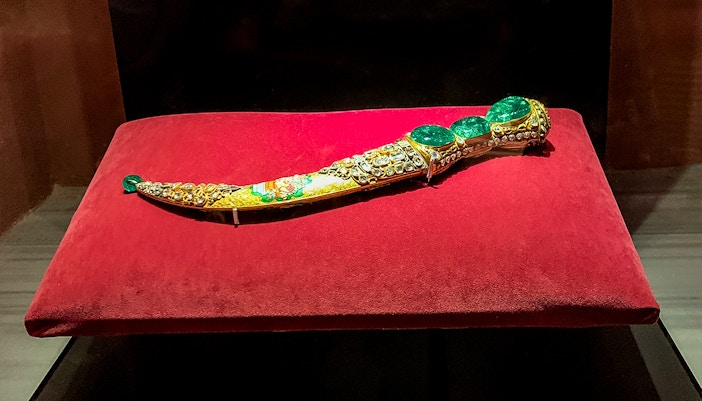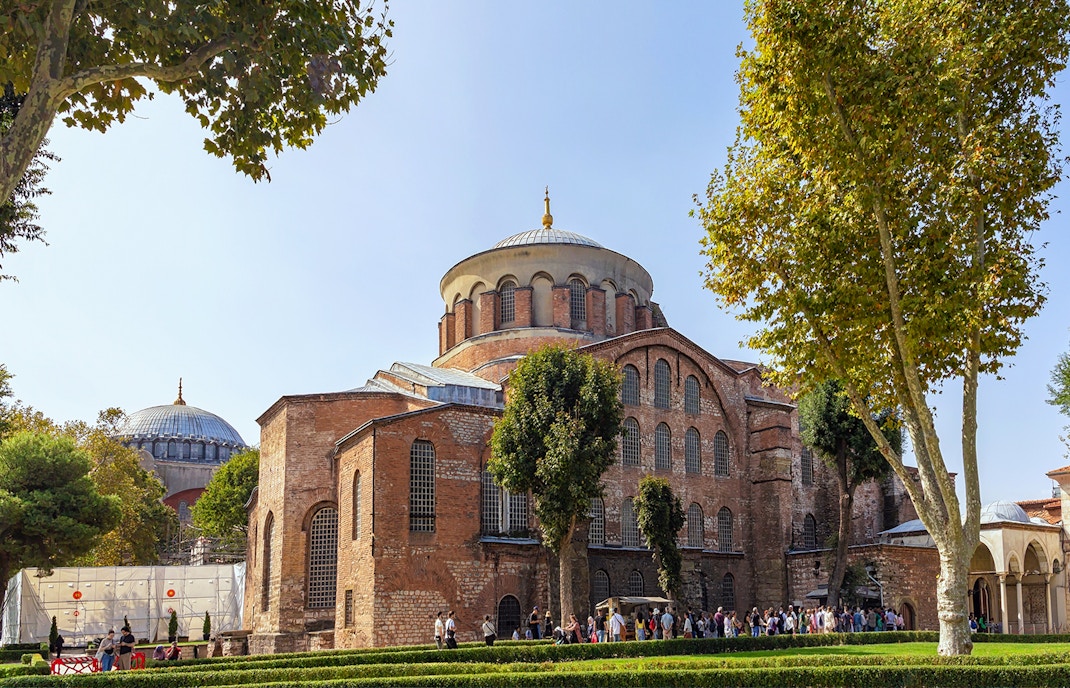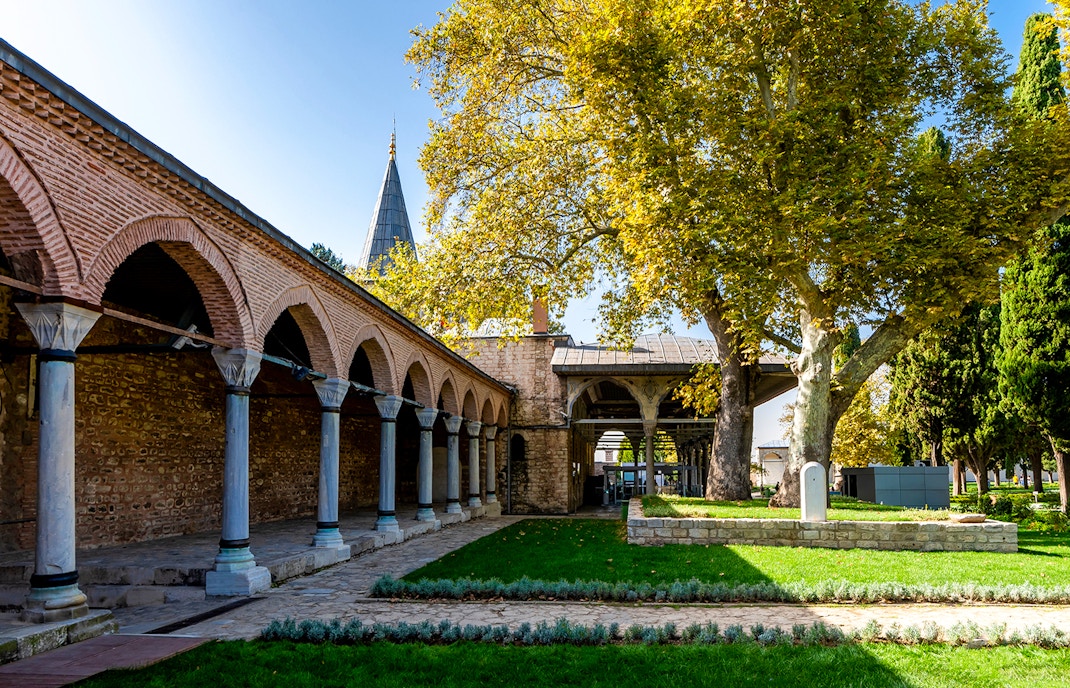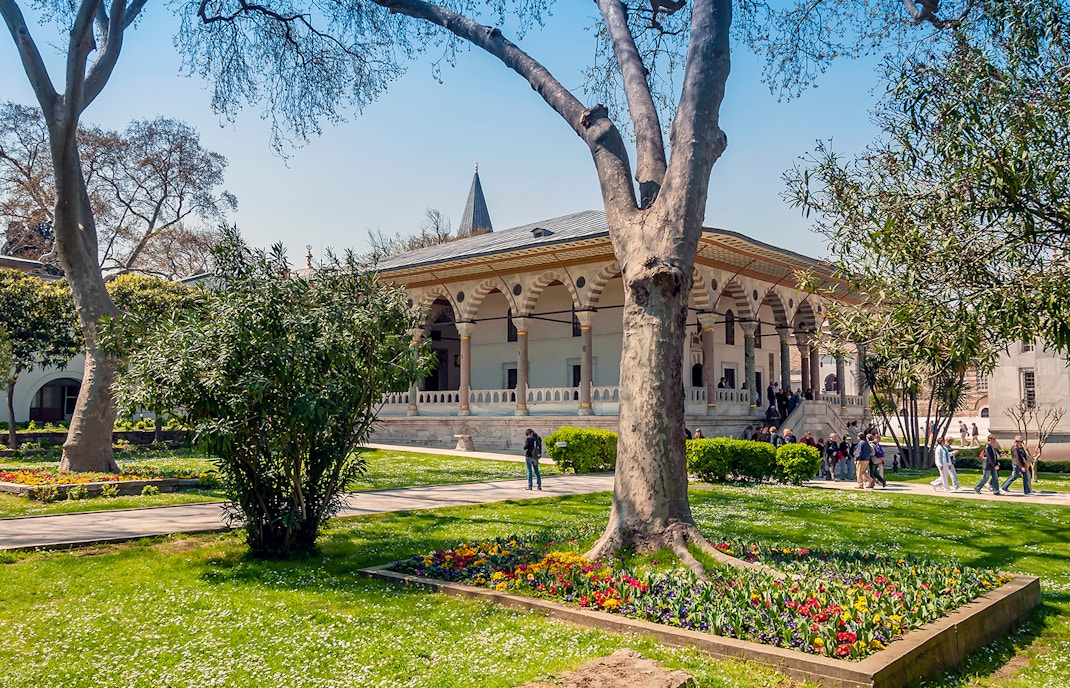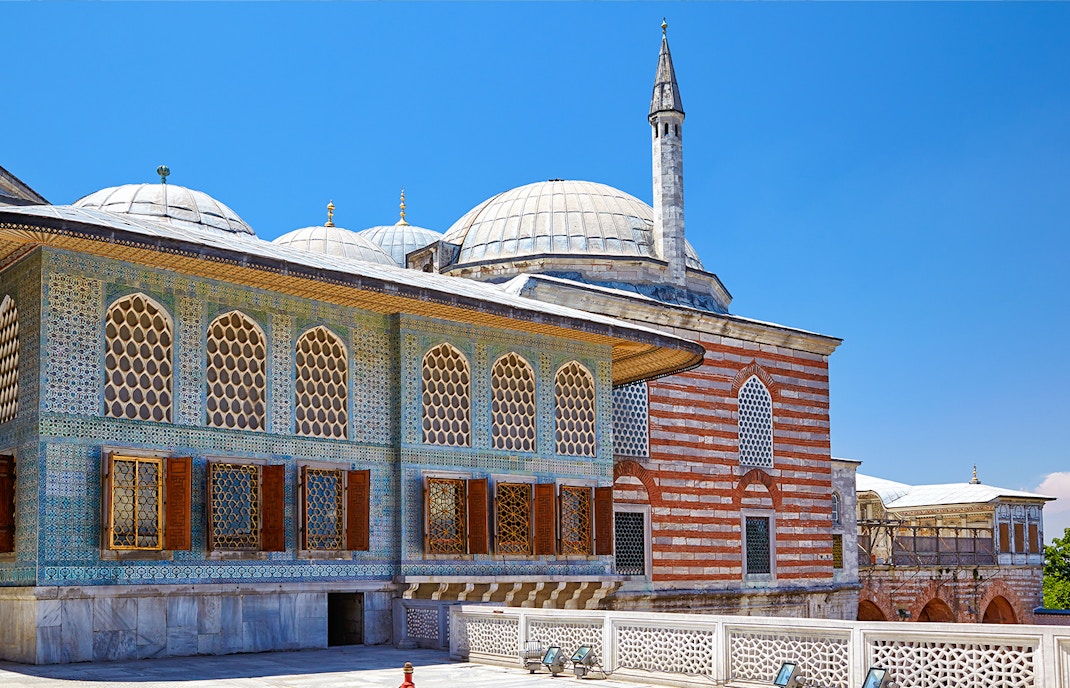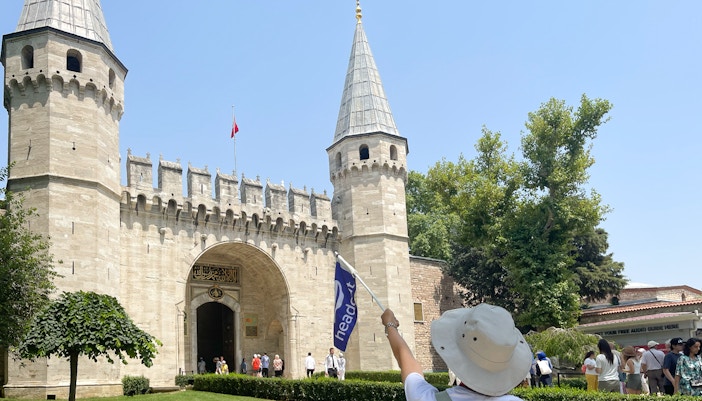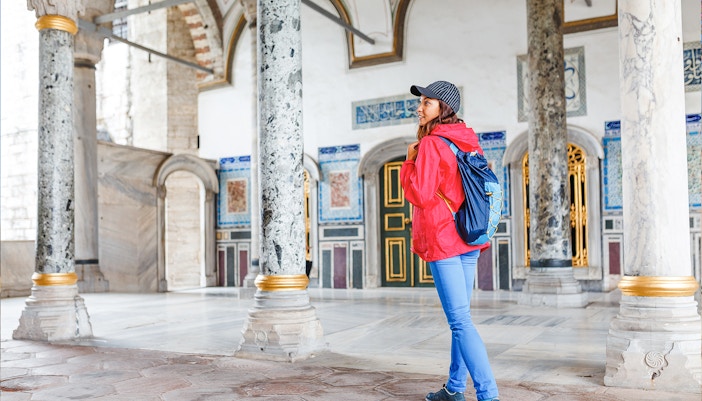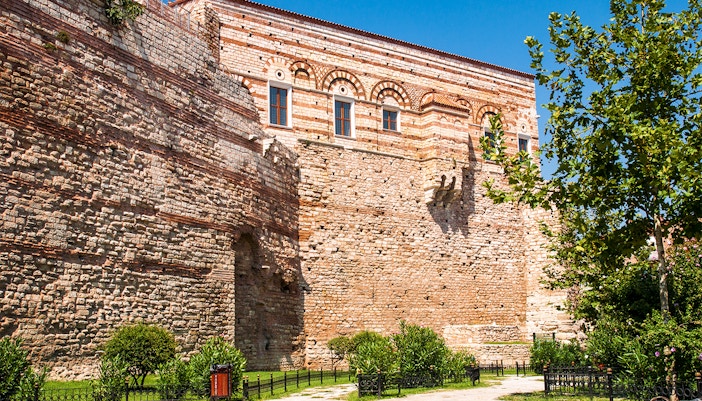Originally built in the elegant Ottoman style of architecture, Topkapi Palace seamlessly blends various styles across its sprawling complex, including the Baroque style in the 18th and 19th centuries. Its lavish exteriors and interiors are heavily influenced by Ottoman, Persian, Islamic, and European designs, characterized by ornate and graceful domes, pointed arches, intricate marble and tilework, and elegant courtyards.
Noteworthy structures include the Imperial Council Chamber, exhibiting exquisite Iznik tiles, and the Harem, a labyrinth of opulent chambers. The Second Gate, completed during Suleyman I's reign, stands as a testament to Ottoman grandeur. The sprawling complex embodies the beauty of symmetry and the sophistication of Ottoman aesthetics.


